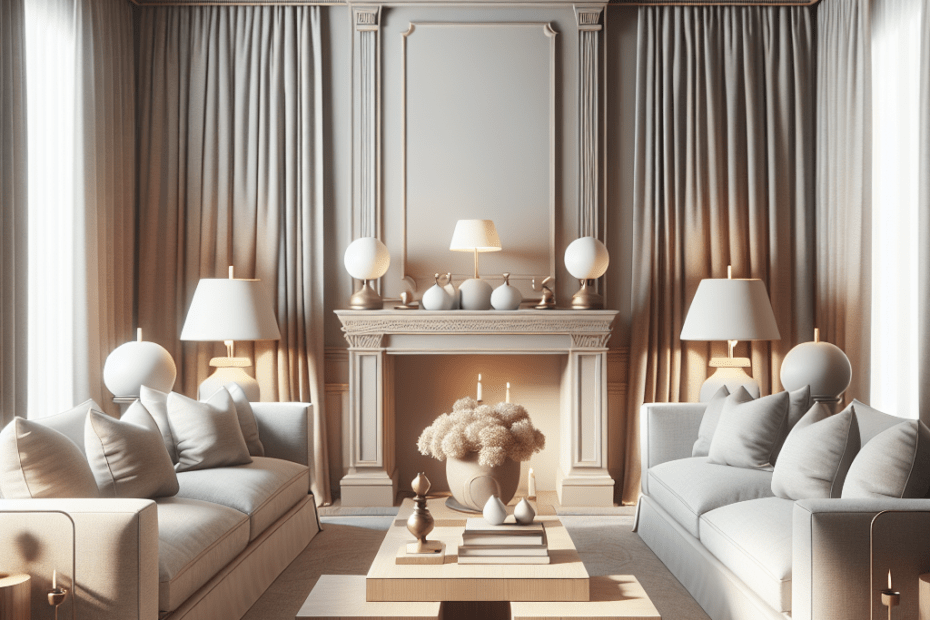In the realm of interior design, “Symmetry in Room Design” stands as a pivotal concept that provides aesthetic balance and harmony to living spaces. They aim for visual equilibrium, making rooms both functional and beautiful. Harnessing the power of symmetry can dramatically enhance a room’s appeal, ultimately creating a welcoming environment for residents and guests alike.
Understanding Symmetry in Room Design
Symmetry in room design entails arranging the elements of a room so that they mirror each other on either side of a central point. This balance creates a sense of order and calmness. Achieving this involves considering various components such as furniture arrangement, lighting, art placement, and color coordination.
Why Symmetry Matters
Research from the University of California, Berkeley suggests that humans are naturally inclined towards symmetrical spaces, as they perceive them to be more harmonized and pleasing to the eye. Their studies reveal that 67% of those surveyed prefer symmetrical designs over asymmetrical ones, indicating a significant trend towards balanced room layouts.
Techniques for Achieving Symmetry in Room Design
To master symmetry in room design, several strategies can be employed:
1. Furniture Arrangement
One of the simplest ways to achieve symmetry is through furniture arrangement. They should place identical pieces, such as sofas or chairs, on either side of a focal point like a fireplace or television. This setup anchors the space and directs the viewer’s attention.
2. Balanced Lighting
Lighting plays a crucial role in creating symmetry. Matching lamps or identical chandeliers on opposite sides of the room provide even illumination and contribute to the aesthetic balance.
3. Art and Decor Placement
Art and decorative elements should be strategically placed to maintain equilibrium. Positioning artwork or mirrors symmetrically on walls gives a sense of uniformity. Similarly, vases or plants can reflect this layout when placed in pairs.
4. Color Harmony
A unified color scheme enhances symmetry. By using coordinated colors on opposite sides of the room, they can maintain continuity and visual relations between elements. Complementary or analogous color schemes work well in creating this effect.
Applying Symmetry in Various Rooms
Living Room
The living room often serves as the focal point of a home. Symmetrical layouts help in creating a formal and balanced atmosphere. Consider placing two identical couches across a central coffee table and flanking them with matching side tables.
Bedroom
In the bedroom, symmetry starts with the bed as the focal point. Arrange bedside tables and lamps on either side for a balanced setup. They can enhance symmetry with wall art or mirrors above the bed and matching pillows or throws.
Dining Room
Symmetry in the dining room can be achieved by centering the table and placing chairs evenly around it. Chandeliers or pendant lights centrally located above the table emphasize symmetry.
Key Takeaways
- Symmetry in room design creates visual harmony and balance.
- Key techniques include furniture arrangement, balanced lighting, and consistent decor placement.
- Symmetry can be applied in different rooms, enhancing their overall aesthetic appeal.
- Color harmony plays a significant role in achieving visual balance.
- Research shows a strong human preference for symmetrical designs.
| Technique | Description |
|---|---|
| Furniture Arrangement | Place matching pieces on either side of a focal point. |
| Balanced Lighting | Use symmetrical lighting fixtures to provide even illumination. |
| Art and Decor Placement | Position art and decor symmetrically to create uniformity. |
| Color Harmony | Utilize a consistent color scheme for visual continuity. |
FAQ
-
What is symmetry in room design?
Symmetry in room design is arranging elements to mirror each other around a central point, creating visual balance.
-
Why is symmetry important in design?
Symmetry is important because it creates a sense of order, calmness, and perceived aesthetic appeal.
-
Can symmetry work in small rooms?
Yes, symmetry can be especially beneficial in small rooms as it helps in organizing space, making it seem larger and more cohesive.
-
How does color play a role in symmetry?
Colors create visual links between different parts of the room, reinforcing symmetry when used consistently on opposite sides of the space.
-
Is it okay to break symmetry sometimes?
While symmetry is appealing, breaking it with a single focal item can add interest and depth, provided it’s done thoughtfully.
